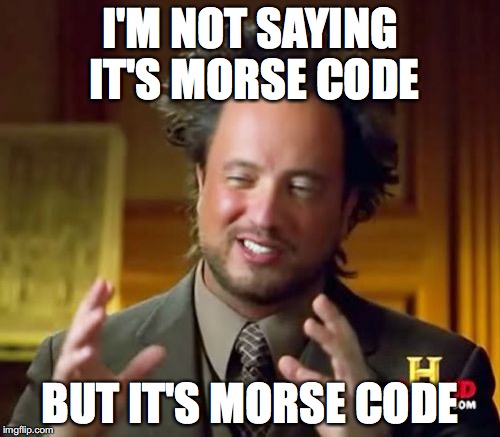I'd say this is plausible, since that was its response to the ADS. I also thought maybe the thing was just replaying its stored exploration data.
If you could use this to also explain the patterns of the chirps, then I might be convinced.
One question however is, why does it give a different sequence when it's on the planet surface? If that would correspond to the elements there, that would certainly be interesting...
I think it always gives a different sequence, but the content of that sequence is always the same. Basically each time the message repeats, there will always be two instances of 100, for the 2 barnacle planets, although they might be in a different order.

